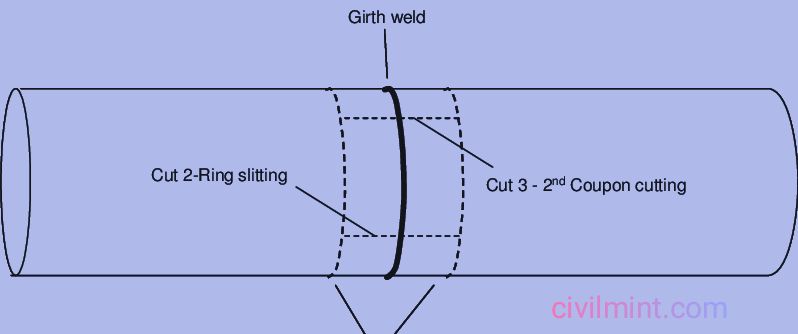Table of Contents
Introduction of Girth Weld
Girth welding is very popular in pipeline industry. Line pipes are joined with each other by using girth welding.
In this blog post, I will discuss about girth welding and all the important things related to the girth welding.
What is Girth Weld?
When two pipes are connected by welding around their circumference is known as girth weld. Welding is done only on circumference. Sometimes it is called as circumferential welding.

Girth welding is very reliable welding in pipeline industry. It is widely used in oil and gas industries to carry high pressure hydrocarbons. Aboveground and underground pipes can be joined by using girth welding.
What are 3 Important Passes in Girth Welding?
Girth welding is completed in three key passes as given below:
Root Pass or Stringer Bead- It is first and most important pass. In this step welding is done on a specefic speed.
Hot Pass- Hot passes are used to enhance the welding thickness of the root pass.
Fill and Cap Pass- In this final step girth jointes are created.
Types of Girth Welding
There are three types of girth welding as following:
1. Manual arc welding: SMAW and GTAW are the basic MAC methods.
2. Semi-automatic arc welding: SAW (Submerged arc welding), FCAW (Flux-cored Arc Welding), and GMAW (Gas Metal Arc Welding) are the usual ones.
3. Automatic arc welding: Flash-butt welding, friction welding, and Laser-beam welding are normally used.
Selection of Girth Welding
As we knows that girth welding is used for pipes. But there are various factors on which selection of girth welding depend.
- Process of pipe manufacturing
- Strength of piping material
- Diameter and thickness of pipe
- External conditions
- Environmental factors
- Length and cost of the pipeline
- Terrain
- Skills of Welder
- Welding location
- Weldment properties
- Welding Economics
- Direction of weld travel
- Ease of implementation
- Weldability of the pipe
Girth Welding for Pipeline Tie-ins
The most important use of grid welding is to Tie-in piping connection. It is very critical job. If not performed properly, pipeline can leak. In this process new pipes are joined with existing pipeline. Different connection of various pipes are joined together.
As we knows that, most of the hydrocarbon pipelines are underground and can not excavated frequently. Hence, to make a weld joint between two completed piping sections, the alignment, preparation, and accuracy level should be well planned to get reliable and strong girth weld joints.
Repair welding and mainline welding also call for various girth welding methods like Shielded metal arc welding, Flux-cored arc welding, Gas tungsten arc welding, Submerged arc welding, Gas metal arc welding, etc.
In recent times, various automatic girth welding machines are developed which makes the girth welding process efficient with less effort. Even automatic welding robots are also developed. Girth welding can also be used for welding tanks. Automatic girth welding machines produces reliable welds with precise control of the process.
The girth seam welds are usually classified into the following two categories: Vertical circumferential seam and Horizontal girth seam.